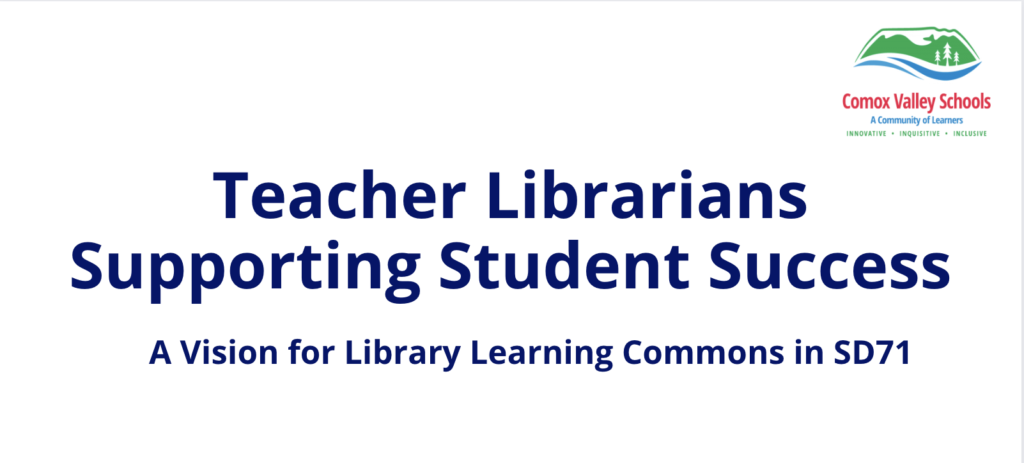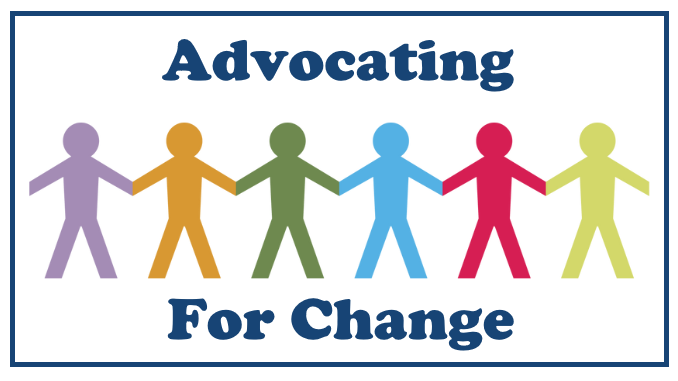
By Lila Armstrong
Advocacy comes in many forms but is an important part of any teacher-librarian’s (TL) job. It involves engaging others, exercising your voice and mobilizing evidence to influence policy and practice (CNA, 2024). If we look to the Leading Learning standard for Advancing the Learning Community to achieve school goals, we see the many ways that ongoing advocacy can be exercised within our learning communities and teams to drive progress. The standard highlights the many ways that we might engage others collaboratively, exercise our voice to showcase student learning, mobilize evidence through action research for library management or influence policy through intentional partnerships and professional growth at the district level.
What I’ve come to understand is that advocacy is like concentric circles – like a drop of water causing a ripple effect. When we start in a TL role, we might first consider advocating for our role within the school, for more time with students, for book purchases, or for school programs. But it does not take long to see that if we join hands with other schools, other programs, and other teachers, we can use our voices to advocate for change and advance the learning community. This story is about how we stepped out, together, to advocate for teacher-librarians and teacher-librarianship within our school district.
In the Fall of 2023, we met as a full group of elementary and secondary TLs to discuss our goals for the year. With so many conflicting schedules to manage, we decided to break into interest-driven committees and provide many avenues for TLs to get involved and engaged with one another. We wanted to see if this small-group approach would continue to push our learning and foster collaboration.
As a Canadian School Libraries (CSL) super-fan, I had shared the Framework and Foundations document, as well as the changes to Leading Learning soon to be released. I proposed a CSL/Leading Learning committee. With the addition of other members, who expanded on the idea, it became a Leading Learning/District Advocacy group.
In the past, but not since Covid, this group regularly shared with the District Education Committee, providing updates and news from libraries across the district. One of our committee members, who had been part of this process, reached out to see if this was something we could reinitiate and asked for a date in late spring. We wanted to put ourselves in a position to advocate for our roles when we were not in a position of hardship. So often advocacy efforts occur in crisis; we wanted to step out with a vision and a plan to move forward together with the district.
We heard back with great news: we had been invited to speak before the Committee of the Whole, which includes the (new) Superintendent and School Trustees. The surprise twist was that we would present in early January and we had a 15 minute window. This gave us six weeks to prepare! Four weeks if we did not count the winter break. It is funny to consider how long a 15 minute presentation might sound to a student; as adults, it stressed us wondering how we would fit everything we wanted to say in such a short time.
Our committee started by sending emails back and forth with the big ideas we thought were important, but soon realized sitting down to discuss our priorities would be more functional. We identified a few critical pieces around which to build our presentation: sharing the great things we were already doing, explaining our professional standards of practice (Leading Learning) and how they connected to district goals, and providing ideas as to how we could better support student success, citing the critical foundations from the Foundations and Frameworks document. We sent our proposal out to colleagues asking for feedback on the direction we proposed to take. We also put out a call for photos from each of their library learning commons.
Getting to the Heart of the Matter
As the night of the presentation grew close, we practiced over the phone, over Teams, and then a last minute run-through in the car before entering the School Board Office. It was a moment of hilarity as we sat outside running through our slides, jockeying the cabin light that kept auto-dimming. A technical glitch in the meeting room required last minute emailing of our slides, but it kept the mood of the room light and gave us the chance to crack a few jokes—perhaps settling our nerves.
Once we got going, we found our rhythm. It is easy to talk about all the library things you believe so deeply.
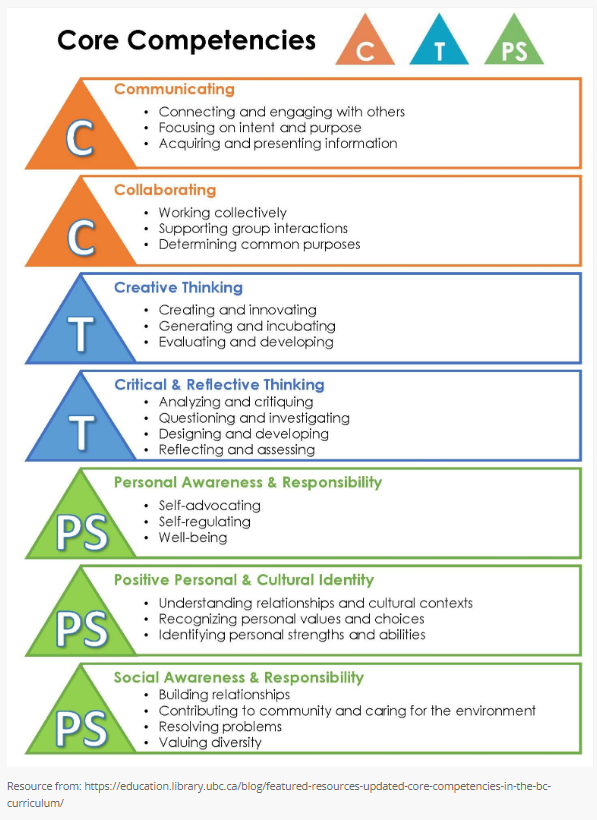
We started with a photo-walk of our district school library learning commons. The photos showed a wide variety of activities and how our TLs support cross-curricular learning at every grade level. We also connected the photos to the core competencies at the heart of the BC Curriculum – highlighting teamwork, collaboration, design thinking, problem solving, storytelling, cultural connections, and, of course, learning joyfully and with intention.
After we settled ourselves firmly in the hearts of our audience members, we moved into our standards of practice, pulling from Leading Learning and sharing the continuous growth model. It was important for us to share that we are a specialized group of professionals who support schools, teachers, students, and staff with an ever-evolving set of skills and knowledge. We have tools available to improve and grow our programs, set goals for our growth, and be accountable to our stakeholders.
Using themes from Leading Learning, we highlighted one example from each standard to identify how our standards support specific, current district goals. We shared that the living document has examples from across the country to model TL leadership in these areas. We did our best to connect the research and theory with district priorities and what this might look like in our schools. It was important for us to provide a window into our libraries, while also providing some education on the role of a teacher-librarian. (Someone recently said to me, “Wow, I thought TLs just did robots!”).
We used the concentric circles diagram below to illustrate the connection. We described one district goal and elaborated the path through Leading Learning, and what we might see “on the ground.” Although this diagram isn’t exhaustive, it shows that as a group, we focus on supporting district goals – grounded by professional standards of practice.
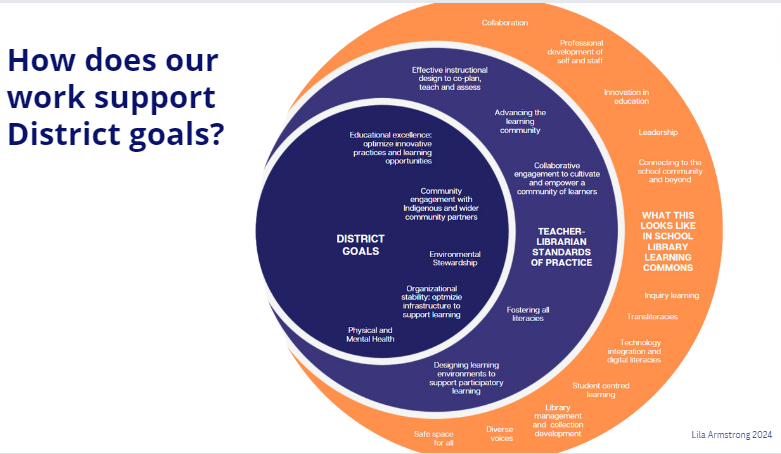
Although we did not have time to dig in as deeply as desired, we prioritized the commitment our group has to providing students and staff with learning commons that are equitable, diverse, and inclusive. In the spring of 2022, our district signed an Equity and Non-Discrimination Policy, part of which states: “The policy follows the letter and spirit of the Canadian Humans Rights Act, B.C. Human Rights Code, the B.C. Declaration on the Rights of Indigenous Peoples Act and the B.C. Multiculturalism Act. These Acts shall be observed, supported, and enforced, so that all members of the SD 71 community may work together in an atmosphere of respect where differences are honoured.” We described the importance of library learning commons as a safe space, with intentionally curated collections to meet the needs of all learners.
Weaving together the concepts of accessibility, Universal Design for Learning, differentiation and staffing/programming, we shared our intention that while we all work hard to provide excellent programming and resources to make libraries an extension of the classroom, the practical part of our staffing structure often creates inequities between sites.
Our vision for the future included four priority elements: full-time TLs at every site, district leadership, strong policy, and a communication plan.
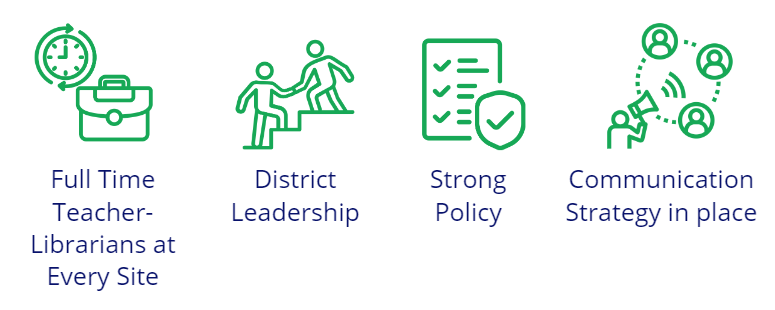
Naturally, every district has its own set of priorities, but we built our presentation to reflect our interest in being part of the process moving forward. Although we are unlikely to see full-time TLs at every site, we shared why we thought this was best for students, and how it would ensure equal access to a qualified teacher, instead of a service-based model on days when TL time is split with another school site. Similarly, members of our own group have different visions as to what kind of leadership model would be most successful, so we made sure to share examples from other districts in the province, and leave the door open for discussion and relationship building with senior administration in this regard.
Our ask for strong policy is perhaps the most achievable in the short-term. Our district policy was last updated in the late 1990s. Clearly it is time for a rewrite. Although we are well-supported by school administrators when issues arise, the rise in book challenges is one example of why clearly stated district-wide policies on collection development, management, weeding, and student choice are critical. However, the ability to create this policy and ensure implementation needs district-level administrative oversight and collaboration.
As we concluded our presentation, we asked to re-engage with the district regularly, and to be included in discussions about student success and how TLs can better support district goals. We also asked for suggestions and feedback on how best to share our successes, our stretches (challenges), and ideas for how we could open the doors of the learning commons to everyone in the district. An exercise in advocating for ourselves quickly morphed into a presentation that celebrated our connection to students and passion for teaching/learning in the LLC, and clearly illustrated how we currently work to support district learning goals. Although we had particular reasons for addressing the committee, these were a few takeaways that superseded simple advocacy.
The Ripple Effect
A final “aha moment” happened during conversations that occurred as everyone began packing up for the night. Nearly every Trustee came over to talk with us and share thoughts on what they learned, or share their favourite library moment growing up. These conversations gave us the opportunity to talk freely about our library passion – without watching the clock! We don’t often have the opportunity to speak with School Trustees or before a committee that includes the Superintendent. The Trustees asked some wonderful questions during the meeting, and shared their curiosity for understanding the library learning commons model better. The follow up afterwards made us feel valued and appreciated.
As we prepared for this meeting, the TL group engaged in difficult conversations about leadership, values, and vision. These conversations were well overdue and will stay on the table as we continue to challenge ourselves to move along the growth stages of Leading Learning teacher-librarians. It’s clear that structures and processes are needed to guide us successfully, including ongoing education and advocacy.
References
Comox Valley Schools Committee of the Whole. The presentation from January 16, 2024, can be viewed here starting at 23:15: https://www.comoxvalleyschools.ca/committee-of-the-whole/
“Advocacy Priorities.” Advocacy Priorities, Canadian Nurses Association, 2024, www.cna-aiic.ca/en/policy-advocacy/advocacy-priorities.
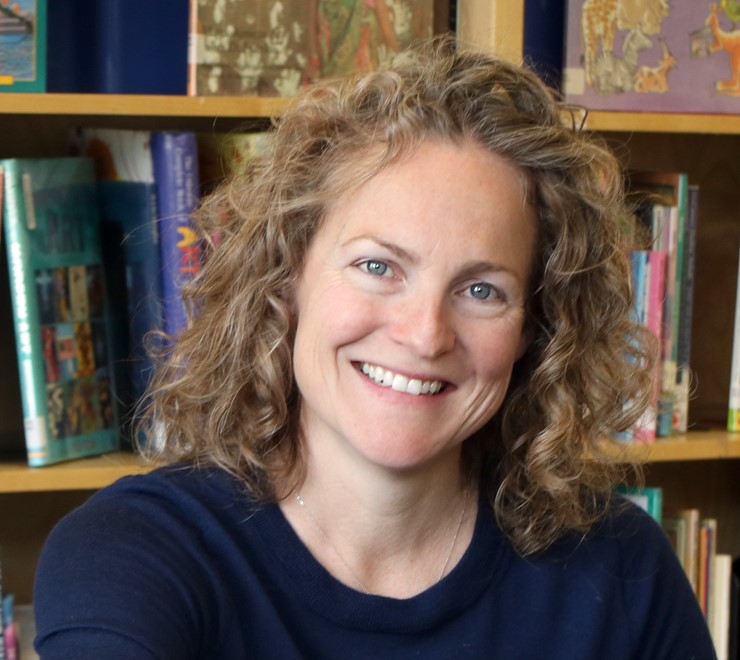
Lila Armstrong is a teacher-librarian in Courtenay, BC, SD71 and a member of the CSL Leading Learning committee. She is also an asparagus farmer, beekeeper, and all about learning. She is currently pursuing studies in Educational Leadership. Lila is dedicated to making her LLC vibrant and to growing the strength of the TL group in the district. She enjoys the adventures that come with a farm with her sons, husband and critters.

